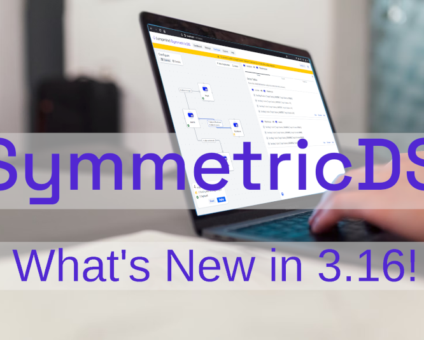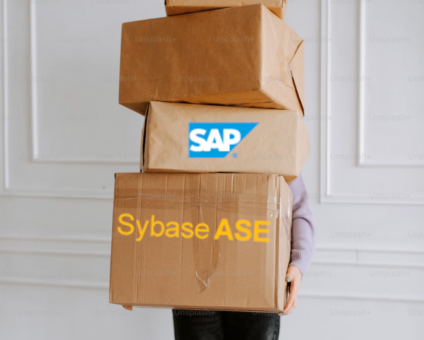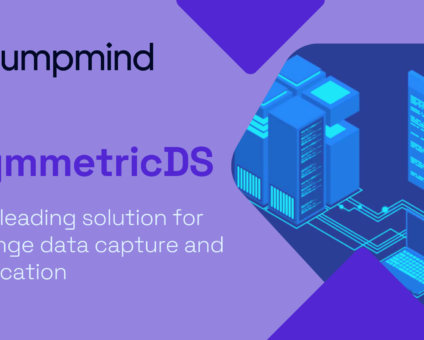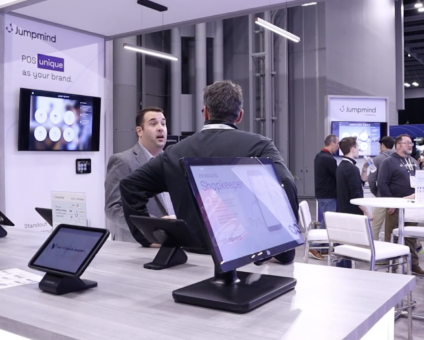It’s a wrap for the Jumpmind Team at Shoptalk Spring and we could not have …
![]()
Cloud-native POS platform for seamless omnichannel customer experience.
![]()
A single hub for all promotions campaigns.
- Omnichannel ExperienceCreate seamless customer experiences
- Device IndependencePOS agnostic to form factor or operating system
- Self-CheckoutDo more with fewer associates
- Mobile StoreLeverage POS from anywhere
- POS on the GoEnable associates to sell outside of the store
- Unified PromotionsStreamline and simplify promotion workflows
- CX ConnectAllow customers to engage with POS during checkout
- Composable CommerceCreate the store experience you want
![]()
The most advanced synchronization solution for databases and file systems.
![]()
Data configuration and batch automation across different disparate systems and vendors.
-
Data Replication
- Multi-tier DistributionReplicate thousands of remote locations
- Cloud Database ReplicationCapture live changes from on-premise to the cloud
- High Availability and Load BalancingEnsure 24/7 access to data and scale efficiently with demand
- Analytics and ReportingCapture the whole picture with real-time reporting
- Multi-masterMaintain consistency of data in a peer to peer setup
- Data WarehouseReplicate live and historical data to a warehouse
- MigrationsConduct live data migration with no downtime
-
-
Data Integration
- Master Data ManagementChanges propagate across the entire system, allowing you to maintain a centralized view of all parts of your core business entities.
- Application IntegrationReduce dependencies, complexity, and risk to build a high-performance, data-driven application.
- Web ServicesIntegrate multiple systems using web services or build a business application using a service-oriented architecture.
- Data WarehouseIntegrate disparate data from multiple systems so you can transform data for better business intelligence and reporting.
- Data MigrationConduct live data migration during critical server replacements, storage upgrades, and data center relocations—with no downtime.
- ImplementationIntegration consultants help design, develop, and deploy an implementation of our products.
- DevelopmentThe product developers can add features, enhance existing functionality or build support for new platforms.
- TrainingEngage our experienced training resources to gain in-house knowledge and expertise on Jumpmind products.
- SupportLeverage product engineers to resolve issues, fix defects and provide updates or patches.
- Proof of ConceptDetermine the feasibility of implementing our products and get answers to your questions quickly.
Providing your sales associates with visibility into customers’ online carts is becoming increasingly popular—and for …
Americans spent $135.5 billion on back-to-school and back-to-college shopping in 2023, making the season a …
View all Blog Posts
The new release of SymmetricDS Pro 3.16 data replication software simplifies setup, improves performance, and …
Sybase ASE (more recently known as SAP Adaptive Server Enterprise), announced its end of mainstream …
Azure Blob Storage has become a popular option for storing files in the cloud. And …
View all Blog Posts
Jumpmind Powers Point of Sale and Promotions Execution for Landmark Retail, One of the Largest …
Retail Technology Leader Jumpmind to Enable Mobile Point of Sale and Inventory Management for DTLR/VILLA …
The retailer is charting its next chapter with retail technology modernization to power inspired omnichannel …
View all Customer Stories
COLUMBUS, Ohio – April 24, 2025 – Jumpmind, a leading provider of innovative retail technology …
Former industry analyst will help guide the company’s product and solution roadmap to align to …
Jumpmind Powers Point of Sale and Promotions Execution for Landmark Retail, One of the Largest …
View all Blog Posts
![]()
Cloud-native POS platform for seamless omnichannel customer experience.
![]()
A single hub for all promotions campaigns.
![]()
The most advanced synchronization solution for databases and file systems.
![]()
Data configuration and batch automation across different disparate systems and vendors.
-
Data Replication
-
-
Data Integration
-
Retail Retail trends, technology, and enhancing the customer experience
-
Data Thoughts on data matters, dialects, performance, and security
-
Customer Stories How Jumpmind impacts the businesses of our clients
-
Videos & Webinars Watch on demand demos, reviews, and tours of our products
-
Company News Get the scoop on Jumpmind's growth and impact
View all Blog Posts
What’s New in SymmetricDS 3.0
What’s New in SymmetricDS Pro 3.0
The new release of SymmetricDS 3.0 will help you:
- Improve and gain more control over performance
- Detect and resolve data conflicts
- Sync with Android mobile devices
Faster Data Loading
The data loader subsystem was refactored to support JDBC batch updates and fast path loading outside of JDBC. A pluggable interface allows for vendor-specific implementations of loading data. PostgreSQL and Greenplum are the first dialects with extensions to bulk-load data. We plan to add more implementations in the future. All dialects benefit from the stream-lining of the data loader code and use of batch updates.
Concurrent Synchronization
Syncing with multiple nodes in parallel is nothing new when you have a group of nodes pushing to a single node, but now the concurrency can originate from a single node. With concurrent synchronization, you control a pool of threads for performing pushes or pulls in parallel with remote nodes. Monitor how many nodes are being synced from a central node and adjust the pool according to network and database conditions.
Conflict Management
When two or more nodes update the same data at the same time, now you can determine which update wins and propagates across the nodes to keep data consistent. One of five detectors are configured at the table, channel, or node group level to watch for conflicts. A resolver is configured to decide which row wins during a conflict. If one of the four resolvers doesn’t meet your needs, use the Java API to write a custom one. A manual resolver is provided that will put the batch in error for the user to resolve from the console.
Android Support
Android mobile devices are now supported for change data capture and data loading. Mobile applications that use a database can include the SymmetricDS Pro library to automatically keep the database in-sync with remote nodes. Developers can write to the device’s database and let SymmetricDS Pro handle the problem of efficiently syncing data.
Super User














